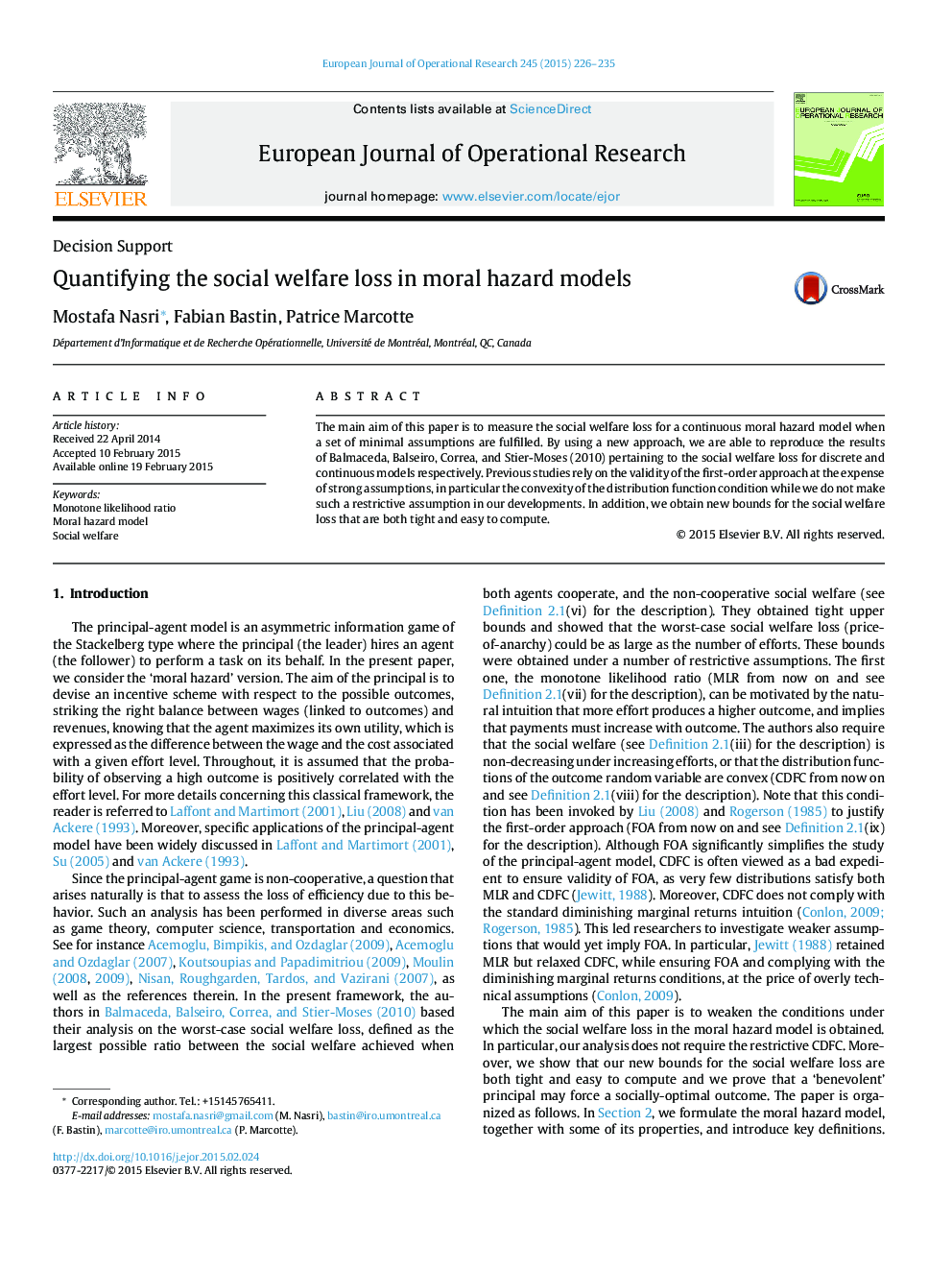| Article ID | Journal | Published Year | Pages | File Type |
|---|---|---|---|---|
| 479555 | European Journal of Operational Research | 2015 | 10 Pages |
•We measure the social welfare loss for continuous moral hazard models.•Our developments require a set of minimal assumptions.•We do not use the first-order approach which demands strong assumptions.•In particular, the convexity of the distribution function condition is not required.•We also obtain new bounds that are both tight and easy to compute.
The main aim of this paper is to measure the social welfare loss for a continuous moral hazard model when a set of minimal assumptions are fulfilled. By using a new approach, we are able to reproduce the results of Balmaceda, Balseiro, Correa, and Stier-Moses (2010) pertaining to the social welfare loss for discrete and continuous models respectively. Previous studies rely on the validity of the first-order approach at the expense of strong assumptions, in particular the convexity of the distribution function condition while we do not make such a restrictive assumption in our developments. In addition, we obtain new bounds for the social welfare loss that are both tight and easy to compute.
